Hello, World!
Greetings, community!
Allow me to introduce myself: I’m Adrián, and ever since I was a child, video games have been an endless source of inspiration and enjoyment in my life.
Exploring my love for video games, I made the clear choice to pursue a career in game design and development. It was a natural decision for me when it came time to choose what to study in university. I always knew I wanted to create captivating virtual worlds and be part of crafting interactive experiences.
Taking the path of 3D art
Although the curriculum predominantly focused on development and programming, I had the opportunity to delve into various aspects of game development. It was during this time that I stumbled upon the captivating world of 3D modeling. Immersed in the process of creating three-dimensional models and scenes, I discovered a new level of artistic expression and the ability to breathe life into virtual worlds with incredible detail and realism. After completing my degree, I took a decisive step forward by enrolling in a specialized Master’s program focused on 3D art for video games.
Bringing an Arctic Station to Life in UE5

Conceptualization and Design
The journey commenced with the conceptualization and planning phase. Here, I delved into extensive research, gathering references, and studying real-world Arctic environments. These references were carefully curated and organized within Pureref, this foundation allowed me to refine the vision for the project, define the key elements, and outline the goals to be achieved. Through careful planning, I established a roadmap that guided me through the subsequent stages.
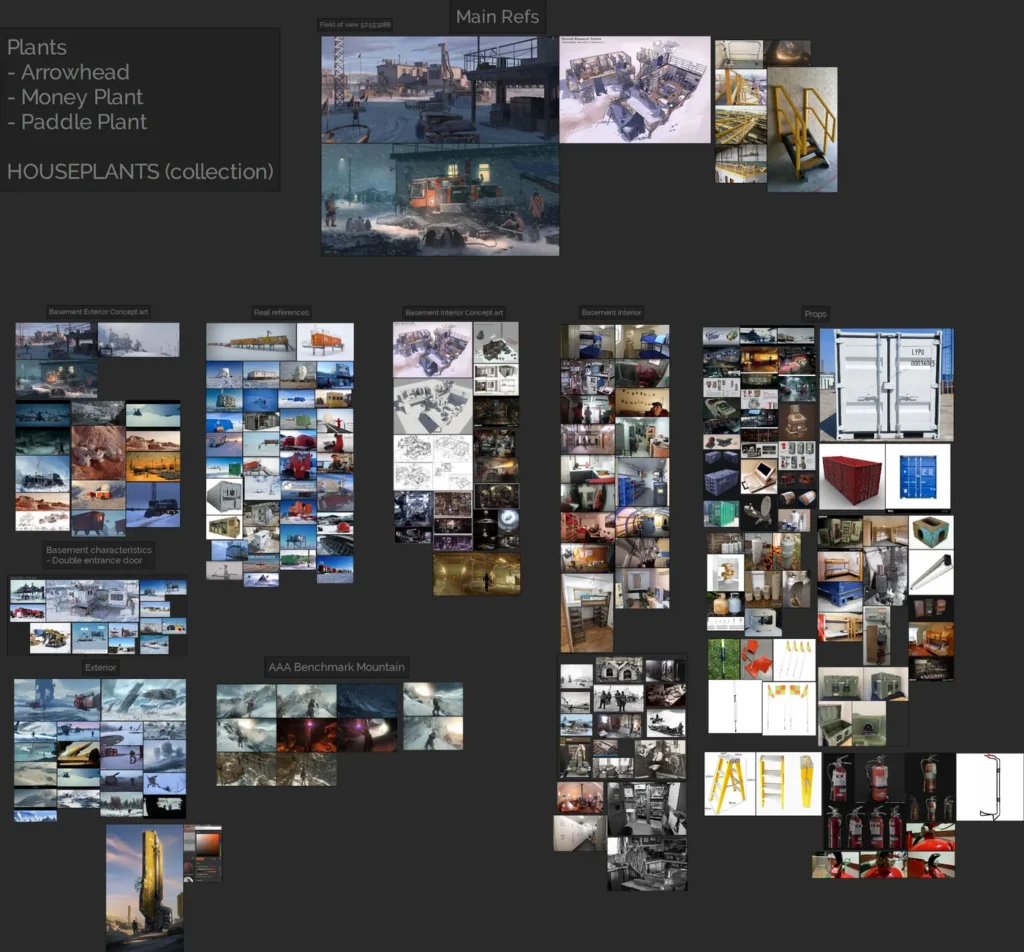
The Power of Blockout
Before delving into the detailed modeling and asset creation, I recognized the importance of starting with a solid foundation. The blockout phase served as the initial blueprint for the Arctic station, allowing me to establish the overall composition and layout of the scene.
During the blockout phase, I focused on creating simplified geometry and placeholders to represent the main elements of the environment. This low-detail representation provided a clear understanding of the spatial relationships and helped me refine the overall structure before investing time in intricate modeling.
Through the blockout process, I iterated and refined the scene’s composition, ensuring optimal flow and visual impact. This crucial step allowed me to make informed decisions on the positioning of key elements such as the containers, mountain backdrop, and sci-fi extractors. It also provided a solid foundation for future modeling, texturing, and lighting phases.
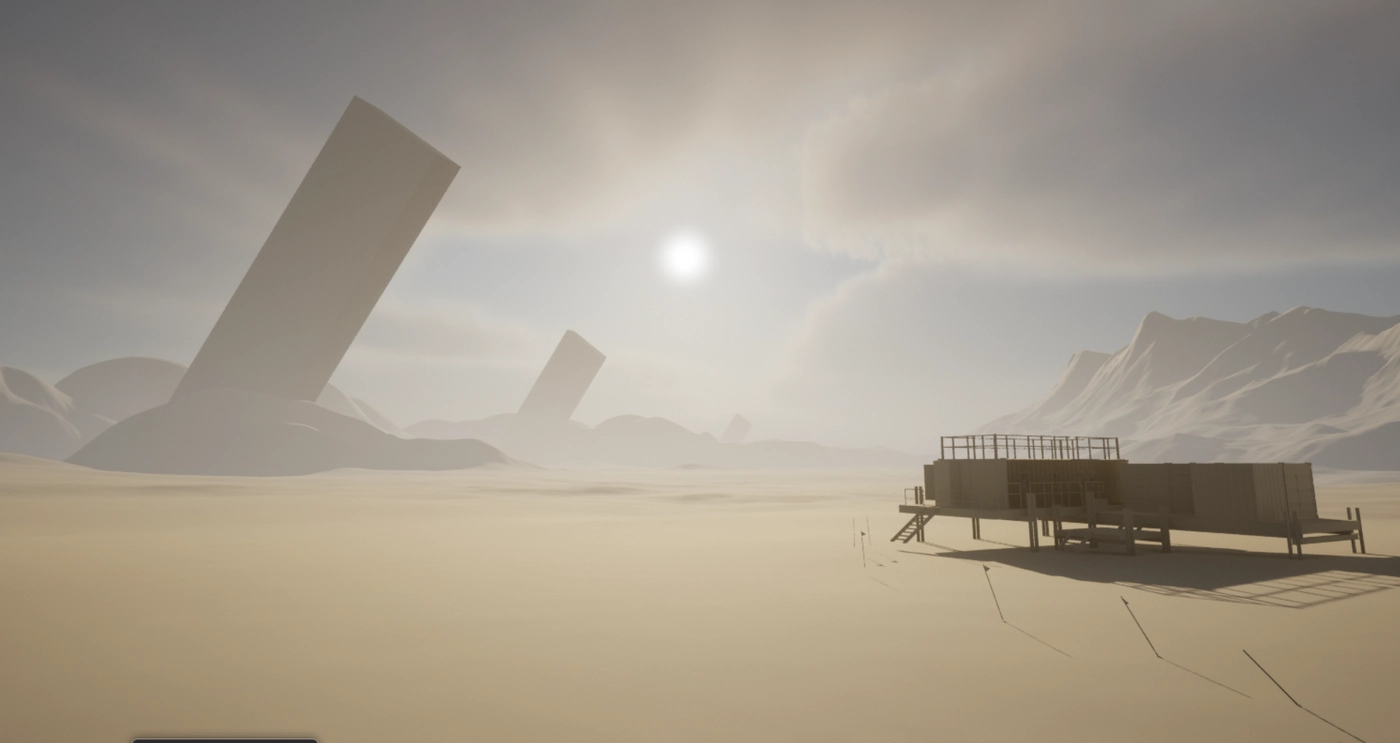
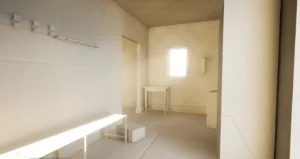

Exterior Texturing and Modeling
In this phase, I focused on texturing and modeling the exterior of the Arctic station, utilizing advanced techniques to generate nanite geometry from textures created in Substance Designer. This approach allowed me to achieve a high level of detail and realism in the final result.
Generating High-Quality Textures in Substance Designer
I started by creating a wide range of textures in Substance Designer to capture the intricate details of the Arctic environment. The Substance Designer workflow allowed me to generate highly detailed and customizable textures, which later contributed to the creation of nanite geometry.
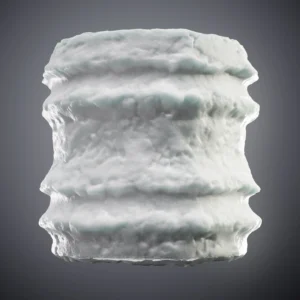

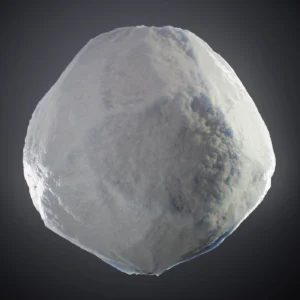



Nanite Geometry Generation and Implementation
With the textures ready, I utilized the power of Unreal Engine 5’s nanite technology to generate geometry on the fly. By leveraging the detailed textures as a basis, the engine automatically generated intricate geometry that accurately represented the fine details of the exterior elements. This process not only saved time but also ensured optimal performance and fidelity. I used the workflow described at “Displacing Geometry: Creating ‘Ninety Days’ in Unreal Engine 5”
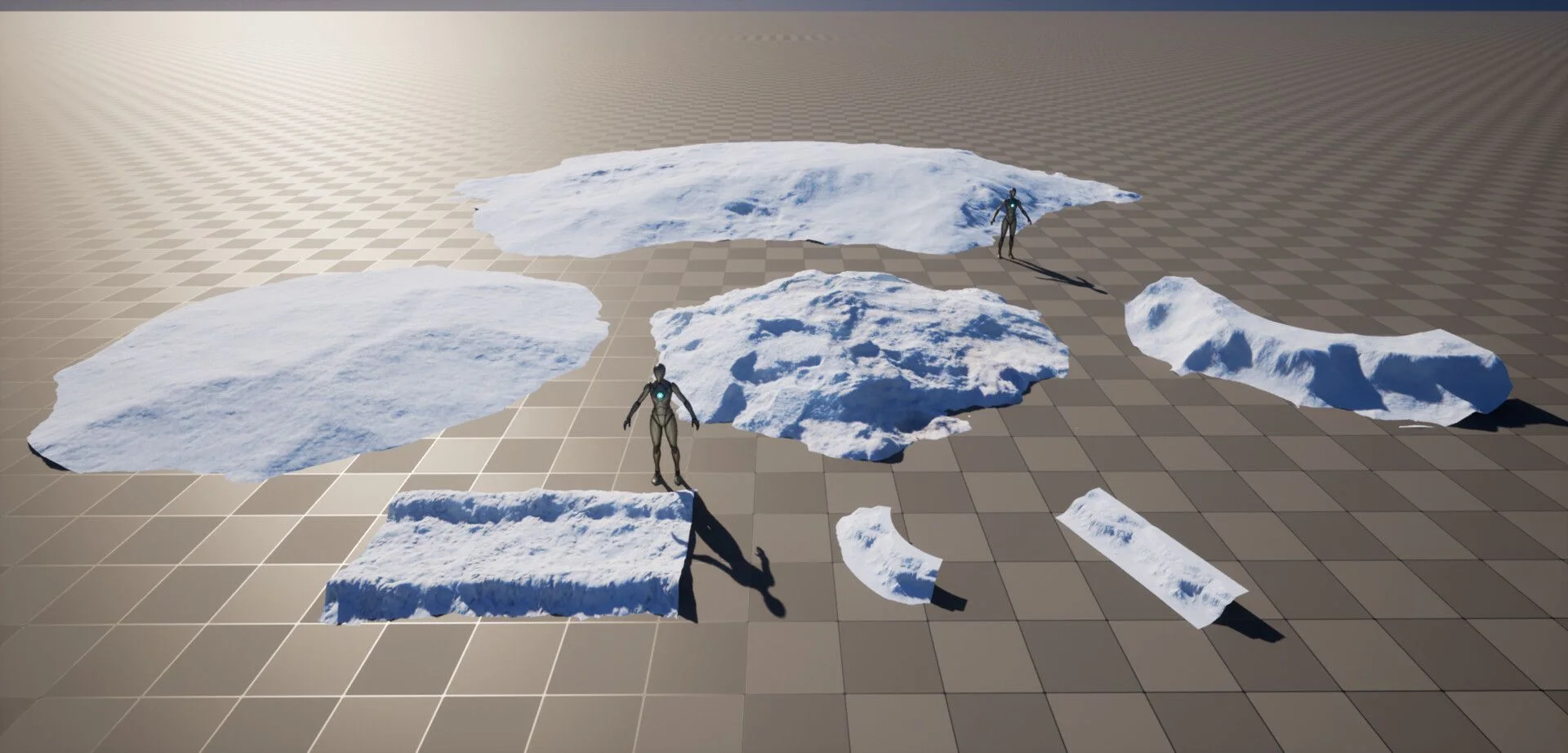
However, to enhance the snow’s appearance and provide additional details such as sparkles and micro normals, I incorporated a microdetail texture and tweaked it from the shader.
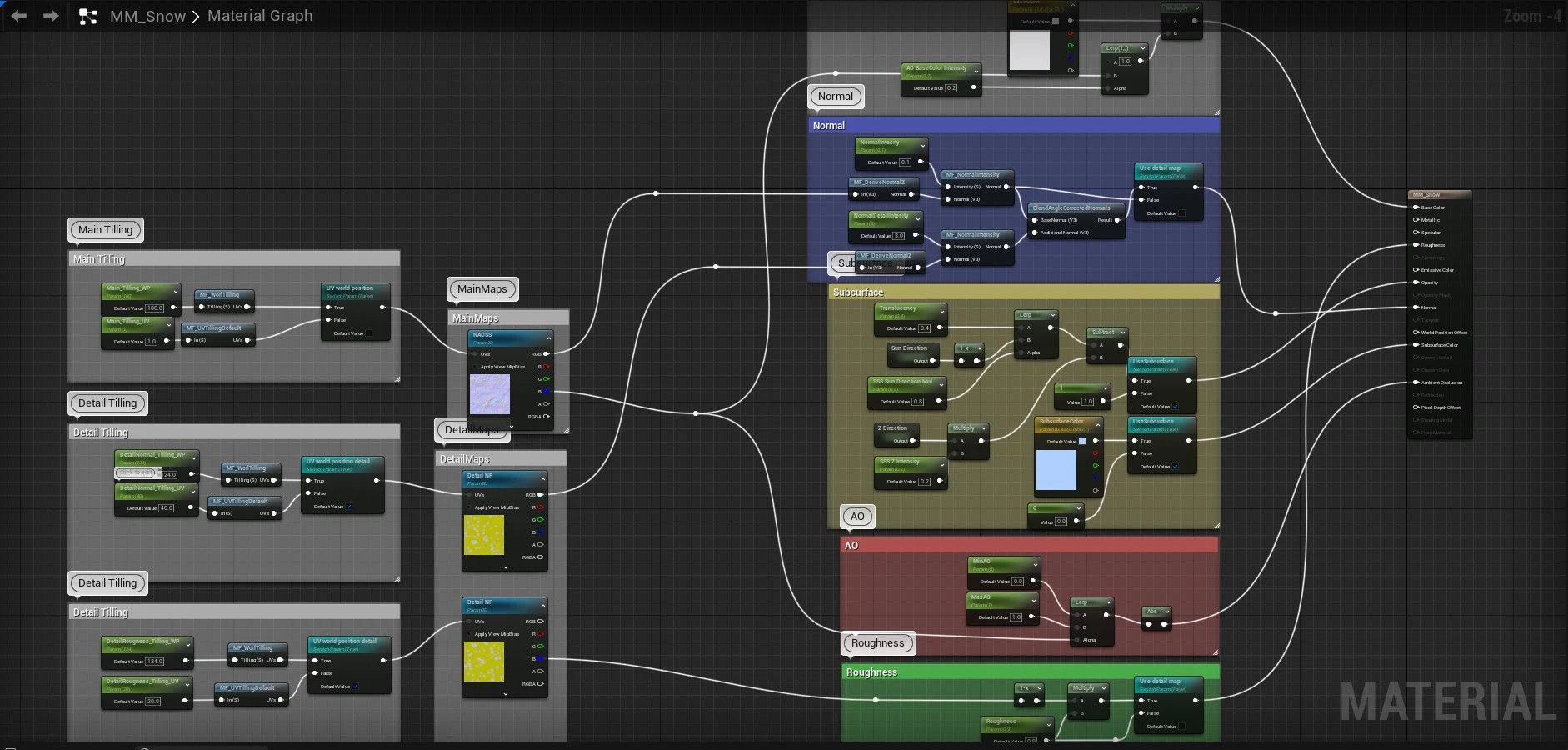

Sculpting Mountains with Gaea’s Procedural Terrain Generation
To create the mountainous terrain of the Arctic environment, I employed the powerful procedural terrain generation capabilities of Gaea. This software allowed me to sculpt and shape the mountains with precision and realism, providing a dynamic and visually captivating landscape.
Using Gaea’s intuitive interface, I experimented with various erosion algorithms, noise functions, and erosion masks to create natural-looking mountain formations. I carefully adjusted the parameters to achieve the desired level of detail, elevation, and ruggedness that reflected the unique characteristics of the Arctic region.
In addition to using Gaea for the procedural sculpting of the mountains, I also created a basic base color map specifically designed for distant elements in the Arctic scene. As these elements are seen from a distance and don’t require intricate details.
When it comes to the surface normals, I took a different approach. Instead of using traditional texture-based methods, I opted for a higher-resolution mesh and relied on Nanite’s remarkable capabilities to handle the rest.


Designing the Arctic Station and Futuristic Extractors
During this phase, I focused on designing the architecture of the Arctic station, which was constructed using modular elements, as well as incorporating distant extractors into the scene. The extractors, being distant elements, utilized ad hoc textures, while the station was built using modular components for enhanced flexibility and efficiency combined with trimsheets and tileable textures.
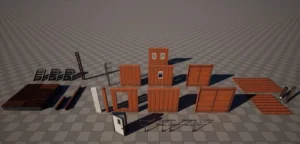
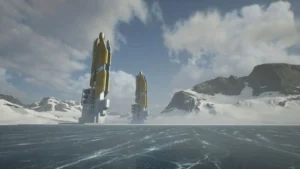
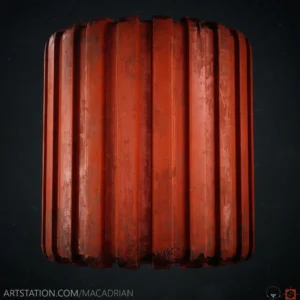
Interior Modules and Asset Creation
In this phase, I focused on creating the interior modules of the Arctic station and developing various assets to populate the environment. This involved designing and modeling interior spaces, as well as crafting assets that would enhance the realism and functionality of the scene.
For the interior modules, I carefully planned and designed each space to serve a specific purpose within the station. I aimed to create a believable and immersive interior environment.
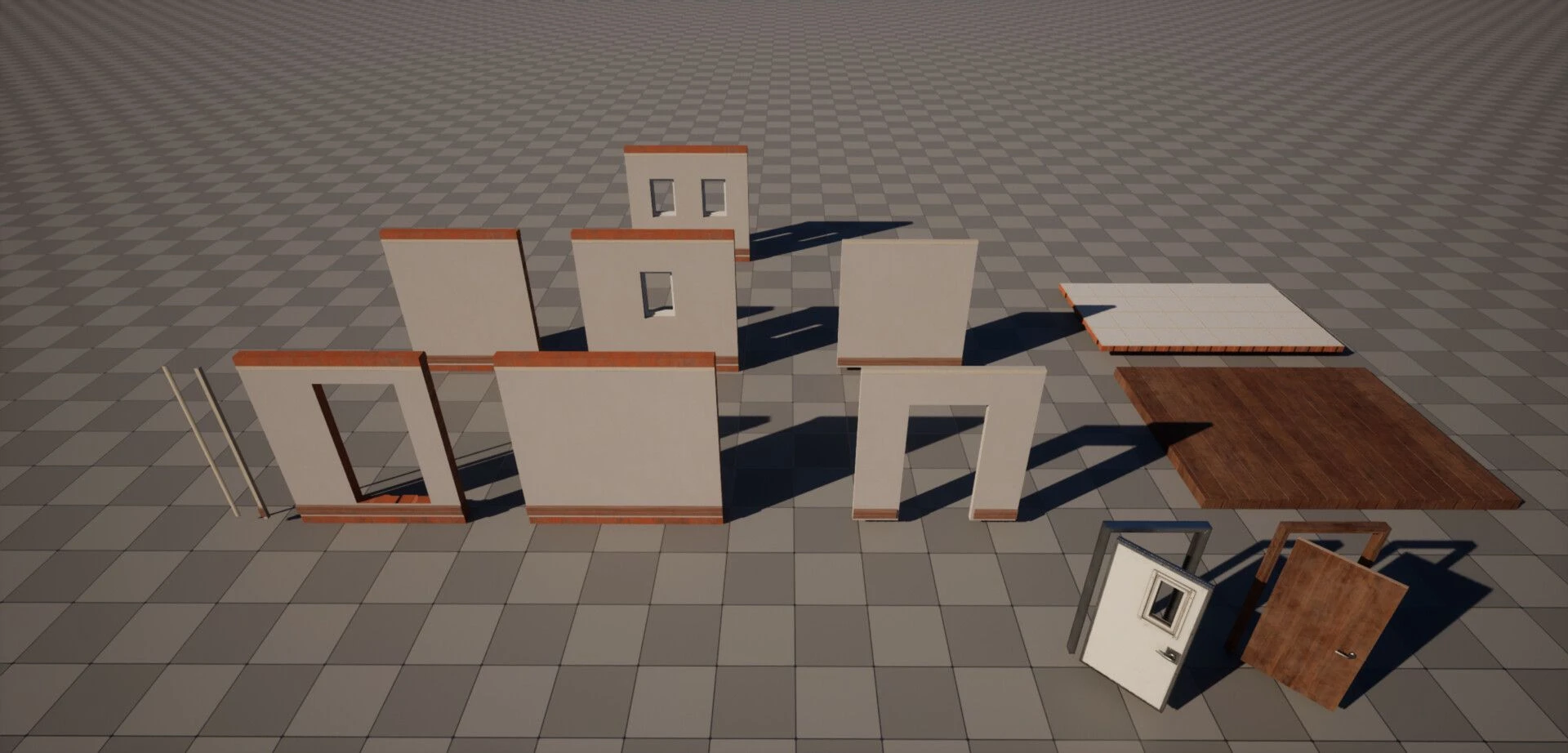
Just like for the exterior modules, I have used tileable textures and trimsheets to texture the interior modules. To create the textures, I have used both Substance Designer and Painter.

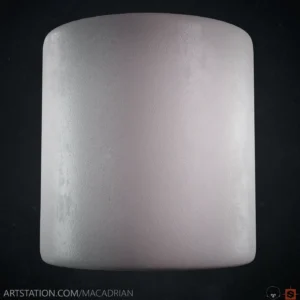
To populate the environment, I created a range of assets that were both visually appealing and functional. This involved modeling and texturing objects such as furniture, equipment, tools, and other elements that would bring the interior modules to life. I paid attention to realistic materials, details, and textures to ensure a high level of visual fidelity.
And finally some group photos of most of the props.
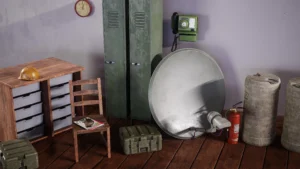
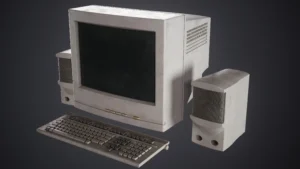


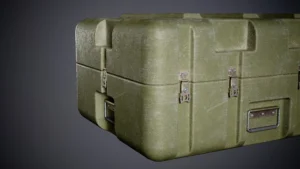



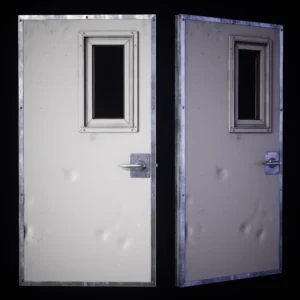
The assets created for the interior modules played a crucial role in adding depth and functionality to the scene. Each asset was carefully crafted to contribute to the overall realism and functionality of the environment.

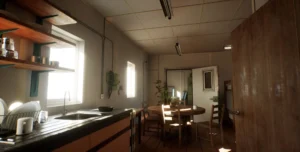
Reflecting on the Journey: A Personal Milestone
As I look back on the journey of creating the Arctic station project, it truly represents a personal milestone in my career. This project has been a labor of love, combining my passion for video games, 3D art, and design into a cohesive and immersive experience.
Throughout the development process, I faced challenges and pushed my creative boundaries. From conceptualizing the initial idea to executing the intricate details, every step of the way has been a learning experience. The countless hours spent refining the design, perfecting the textures, and crafting the assets have been rewarding and have allowed me to grow as an artist.
In conclusion, my journey of bringing the Arctic station to life in Unreal Engine 5 has been an exhilarating and transformative experience. From the initial spark of inspiration to the final render, every step of this project has been a testament to my passion, dedication, and growth as a 3D artist. The Arctic station stands as a testament to the countless challenges overcome, and the endless pursuit of artistic excellence. I am grateful for the opportunity to share this project with you. As I continue my journey in the creative industry, I am excited to explore new realms of possibility and embark on even more ambitious projects.
Thank you for joining me on this Arctic adventure 🥶.





















